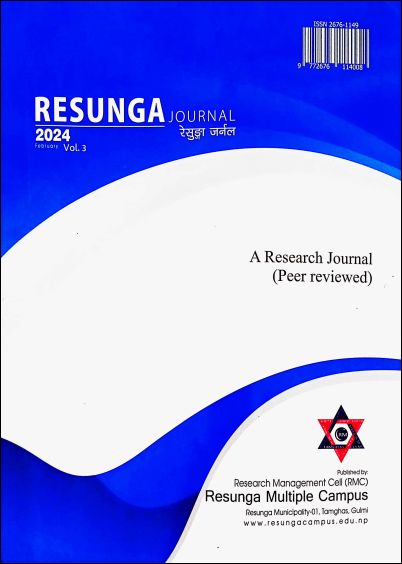Analyzing the Determinants of Economic Growth in Nepal
DOI:
https://doi.org/10.3126/resungaj.v3i1.65882Keywords:
GDP per capita, Autoregressive distributed lag model, Broad money, Inflation, School enrolment rateAbstract
This research provides a detailed examination of Nepal's economic growth, emphasizing the transition from agricultural to non-agricultural businesses, the adoption of policies to boost capital formation, and the macroeconomic challenges encountered. It identifies critical variables like the currency rate and technical advancements. The study aims to investigate the relationship between rising per capita GDP and the variables that impact it to uncover useful information about the forces that drive economic progress. Infrastructure development, human capital investment, political stability, macroeconomic stability, trade and investment, agricultural productivity, industrial development, natural resource management, financial inclusion, technological advancements, institutional quality, and global economic conditions are all important factors influencing Nepal's economic development. Their interdependent links have a considerable impact on the nation's economic trajectory, necessitating regular monitoring and evaluation. To ensure long-term and equitable economic development, policymakers must develop effective policies that include these complexities. Conducting a rigorous empirical inquiry is critical for understanding Nepal's unique situation and delivering policy recommendations. This study used an ex post facto research methodology to investigate the relationship between per capita GDP growth and numerous contributing factors.




